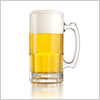Your cart

 Spain: Overall alcohol consumption decreases in the first half of 2024
Spain: Overall alcohol consumption decreases in the first half of 2024
Spain is world-known for its ability to relax and enjoy the simpler leisures of life, like enjoying a caña de cerveza, or a small beer, Euro Weekly News reported on August 16.
However, times are changing and with it goes the traditional choice of drink, as the consumption of beer in Spain has reduced by 14.03 per cent in the first half of this year.
On the other hand, a Clara or shandy, the combination of beer and lemonade or soda, which is more refreshing and has lower alcohol content, has shot up in popularity by 35.4 per cent in the same period.
Although not everyone has simply swapped drinks but instead removed them altogether, with the nation’s overall alcohol consumption decreasing by 2.64 per cent in the first half of this year.
These figures refer to a report carried out by the Delectatech platform, which analysed the comments on digital platforms of more than 250,000 hospitality establishments throughout Spain.
Much of the change in drink choices can be attested to the change in habits but is also a knock-on effect of the price increases on alcoholic drinks that occurred in 2023.
Additionally, there is a growing concern for health and healthier living, especially in the younger generation, which of course sees a decline in consumption of alcohol.
On the other hand, drinks commonly associated with foreign tourism continue to see an increase in consumption, such as the classic sangria, which recorded an increase by 6.51 per cent, as well as drinks associated with celebrations and/or social occasions, such as cava or sparkling white wine, which consumption of has increased by 3.12 per cent, and champagne which is up by 10.16 per cent.
Unlike beer, wine consumption remained relatively the same in the first half of this year; wine consumption in restaurants saw a very subtle uptake, by only 0.08 per cent, with red wine consumption increasing by 3.49 per cent but white wine consumption decreasing by 1.04 per cent.
In terms of cocktails and what are referred to as high-proof alcoholic drinks, these have suffered most from the decline in consumption recorded by Delectatech. This can again be attributed to the price increases to alcoholic drinks, with cocktails usually costing considerably more than a glass of beer or wine.
The only cocktails to see an increase in relevancy was the cosmopolitan and the daiquiri, with an 11.14 per cent increase and 3.29 per cent increase, respectively. Where as other classic cocktails such as mojitos (-17.46 per cent), the caipirinha (-14.32 per cent) and cubalibres (-5.72 per cent) and piña coladas (-3.95 per cent) saw significant decrease in popularity within the first half of 2024.
The decrease in cocktail consumption also falls hand-in-hand with the overall decrease in spirit consumption, which has overall fallen by 3.92 per cent; vodka faced the greatest decline, by 6.63 per cent, followed by rum declining by 4.03 per cent.
Something similar happened with spirits, which overall fall by 3.92 per cent, driven by declines in rum (-4.03 per cent) and vodka (-6.63 per cent).
However, beverages traditionally less relevant in the Spanish on-trade, such as pisco, which shot up 37.69 per cent, and tequila, with a 7.97 per cent increase, continue to gain relevance among consumers.
뒤로
E-malt.com, the global information source for the brewing and malting industry professionals. The bi-weekly E-malt.com Newsletters feature latest industry news, statistics in graphs and tables, world barley and malt prices, and other relevant information. Click here to get full access to E-malt.com. If you are a Castle Malting client, you can get free access to E-malt.com website and publications. Contact us for more information at marketing@castlemalting.com .





